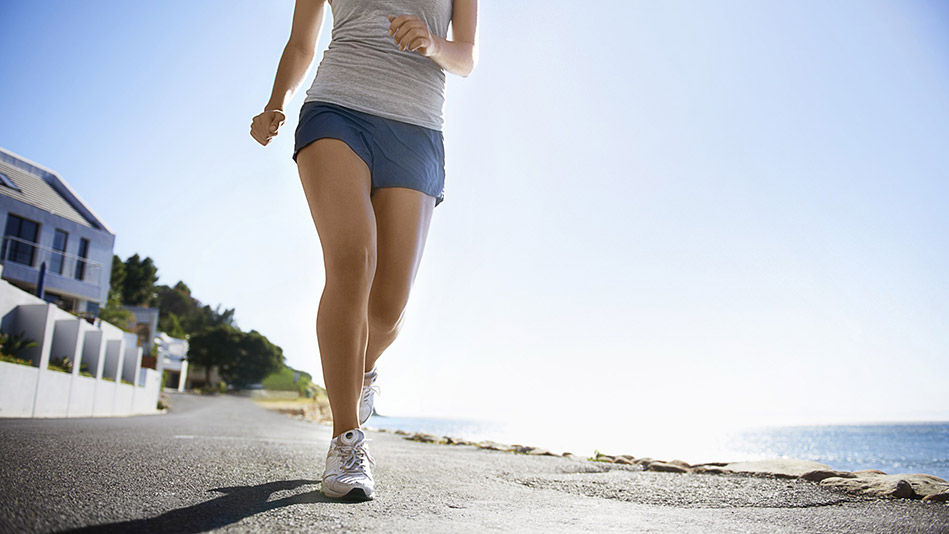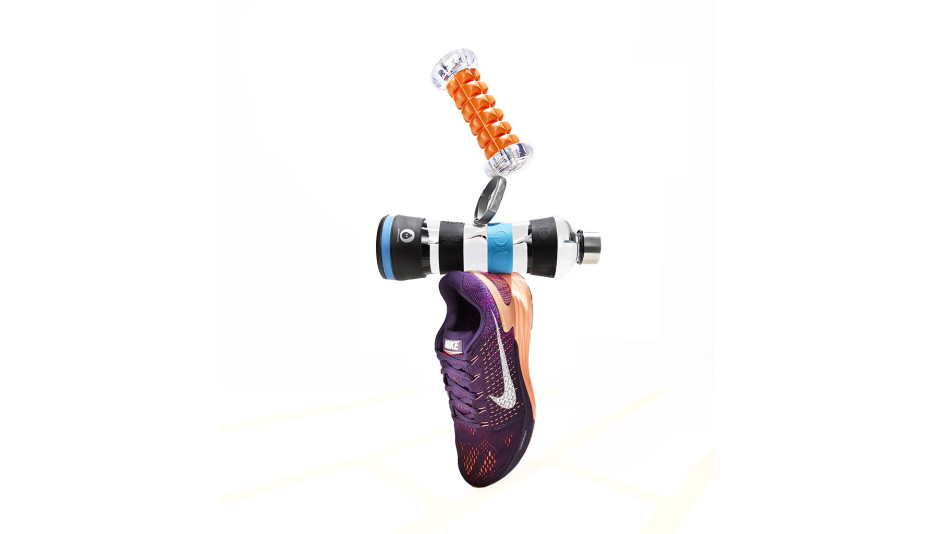Running can do real wonders for your health, especially if you have the right gear.

Photo: Yuri Arcurs/Getty Images
1. Better Knees
Think running wears out your knees? Think again. One recent study found that it may actually help prevent knee osteoarthritis, a condition that affects roughly 9.2 million adults; another discovered that road warriors were up to 18 percent less likely than walkers to develop the condition, in part because running may increase the thickness of knee cartilage.
2. Less Stress
When it comes to the mood-boosting effects of running, science suggests you can get more than just an endorphin high. According to a lab study in The Journal of Neuroscience, running may reduce anxiety by triggering neurons that mute your response to stress.
3. Lower Breast Cancer Risk
A 2013 study of more than 70,000 women revealed that those who walked at least seven hours per week were 14 percent less likely to develop breast cancer than their more sedentary counterparts. The most active women, who worked out vigorously (running or swimming) for at least six hours a week, slashed their risk by 25 percent.
4. Sharper Mind
Good news: You don't have to slog away for a long time to reap impressive benefits. One small study found that people who engaged in light activity—like walking on a treadmill for an hour—three times a week saw gains in memory after just three months, suggesting that short-term fitness may slow age-related cognitive decline.
5. Longer Life
In a 2014 study of more than 55,000 people, those who ran daily—even for just five to ten minutes—lived, on average, three years longer than those who didn't run. Worth noting: Runners who logged longer workouts didn't significantly decrease their risk of death from heart disease more than those who ran less. Who doesn't have five minutes? Get going!
Think running wears out your knees? Think again. One recent study found that it may actually help prevent knee osteoarthritis, a condition that affects roughly 9.2 million adults; another discovered that road warriors were up to 18 percent less likely than walkers to develop the condition, in part because running may increase the thickness of knee cartilage.
2. Less Stress
When it comes to the mood-boosting effects of running, science suggests you can get more than just an endorphin high. According to a lab study in The Journal of Neuroscience, running may reduce anxiety by triggering neurons that mute your response to stress.
3. Lower Breast Cancer Risk
A 2013 study of more than 70,000 women revealed that those who walked at least seven hours per week were 14 percent less likely to develop breast cancer than their more sedentary counterparts. The most active women, who worked out vigorously (running or swimming) for at least six hours a week, slashed their risk by 25 percent.
4. Sharper Mind
Good news: You don't have to slog away for a long time to reap impressive benefits. One small study found that people who engaged in light activity—like walking on a treadmill for an hour—three times a week saw gains in memory after just three months, suggesting that short-term fitness may slow age-related cognitive decline.
5. Longer Life
In a 2014 study of more than 55,000 people, those who ran daily—even for just five to ten minutes—lived, on average, three years longer than those who didn't run. Worth noting: Runners who logged longer workouts didn't significantly decrease their risk of death from heart disease more than those who ran less. Who doesn't have five minutes? Get going!

Photo: Claire Benoist
How to find the right gear.
The results are in: Walking and running are two of the best ways to ensure a healthier life. But if you have no idea where to begin, don't worry. "Just string together enough workouts where you finish just a little farther or a little less out of breath than the day before, and you'll quickly become a better runner," says Nike+ Running Global head coach Chris Bennett. "Consistency is key." To start you off on the right foot, we've rounded up the newest fitness equipment every novice runner needs.
From top to bottom:
1. TriggerPoint Nano Foot Roller
You know you should stretch after a workout, but too many runners neglect their feet. Plantar fasciitis, an inflammation of tissue along the bottom of the foot, affects roughly two million people each year, including both flat-footed runners and those with high arches. Use this mini foam roller to release tension: Stand (or sit on the edge of a chair); place the roller on the floor; put your foot on top; and move it back and forth from heel to toe, concentrating on tender spots. ($25; tptherapy.com)
2. Up2 by Jawbone
Every other week, it seems, there's another fitness tracker on the market. This is one health trend that lives up to the hype: A study found that people who used step counters increased their physical activity by 27 percent. We like this new device because it's one of the more affordable, and its stylish minimalist design looks more like arm candy than gadgetry. ($100; jawbone.com)
3. H2O-Pal
To enhance recovery, don't forget to hydrate before, during and after your workout. Runners need at least one to two more cups of water than the USDA-suggested nine. This water bottle comes equipped with a weight sensor and accelerometer that attaches to the bottom to measure your consumption, gulp by gulp. No, you don't need all the bells and whistles—but if they help motivate you, why not? ($79; h2opal.com)
4. Nike Lunarglide 7
These recently released lightweight running sneakers are perfect for beginners; you'll have a little bounce in your step but still feel stable. Extra midsole support keeps your feet from pronating (rolling inward)—an issue common among many runners, especially those with flat feet. ($120; nike.com)




